This is day 18 in our Hatch-along of Buff Orpington eggs. We are now in “lockdown,” which refers to the day after which we no longer open the incubator. It is also the day that we stop turning the eggs and increase humidity. On day 18, the embryo begins to position itself for the hatch: its head is tucked under its right wing and it orients its head towards the wide end of the egg where the air cell is located.
If a broody hen were sitting on these eggs, she would no longer take her daily trip out of the nest to find food and water or relieve herself. She would remain on the nest in order to maintain the critical temperature and humidity necessary for a successful hatch and to allow the embryo to get into the proper hatching position.
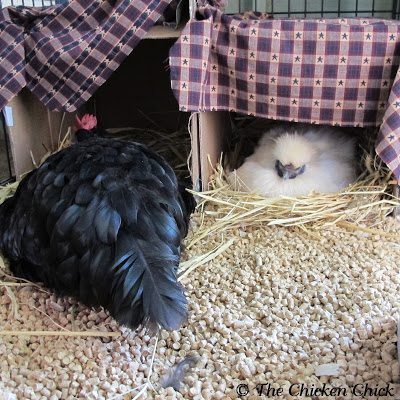
We stop turning the eggs in the incubator at this point so as not to interfere with this important positioning. We don’t want the chick to have to waste energy re-positioning itself, it should only have to concern itself with the work of getting out of that shell.
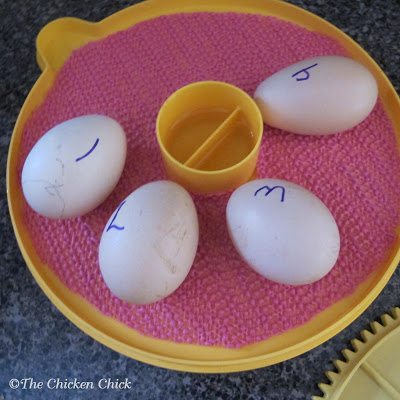
While I could have left the egg turning tray in the incubator, I chose to remove it. I added a piece of rubber shelf-liner to provide the chicks with a secure surface upon which to walk after they hatch.
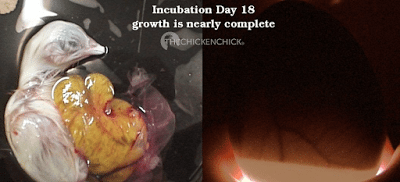
With my Brinsea Mini Advance incubator, the recommended humidity is increased from 55% to 65-70% by simply filling up both water reservoirs. With other types of incubators, humidity is ordinarily monitored with a hygrometer. Too much or not enough humidity can cause hatching problems.
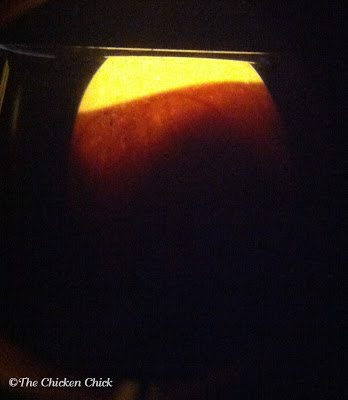
By now, the embryos are fully developed. The egg yolk is attached to its body via an umbilical cord and belly-button type system. Tomorrow, the embryo will begin to draw the yolk sac into its abdominal cavity. The purpose of the yolk is to provide nutrition to the chick while it waits for the mother hen to finish hatching other eggs. A chick can survive for approximately 3 days without food or water due to the absorption of the yolk sac, which is what makes shipping baby chicks via mail possible.
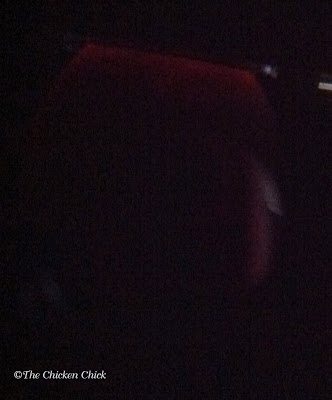
This is the last time I will candle these eggs. I would have removed any eggs that appeared to have expired, but fortunately, I was able to see movement in each of the them. Movement is reassuring, but lack of movement is not necessarily cause for alarm as embryos do have sleep periods. While signs of movement are encouraging, we’re not counting any chickens yet; days 20/21 are a very common time for embryos to die for a number of reasons including genetic defects or weakness.
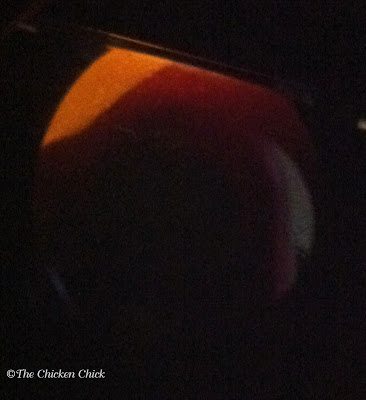
While I can expect to hear cheeping from within the eggs at any time now, it is most commonly heard around day 20. Chicks can hatch earlier or later than day 21 depending on whether temperatures were off a little bit one way or the other (too cool and they’ll hatch later, too warm and they’ll hatch earlier). Stay tuned for the fun stuff coming soon!
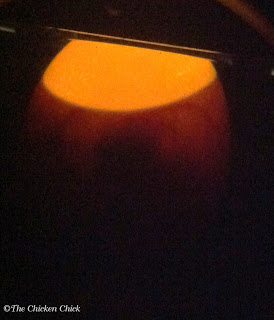
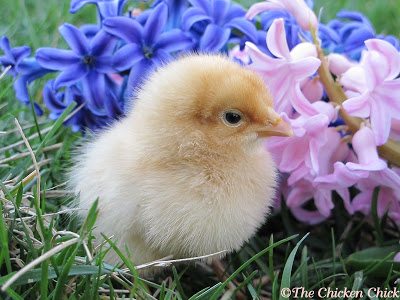

Hatch-along Part 1, Part 2, Part 3, Part 4, Part 5, Part 6, Part 7, Part 8
I henhold til loven skal følgende registreres. Nye lægemidler til det russiske marked. Nye kombinationer af tidligere registrerede lægemidler. Lægemidler, der allerede er registreret i andre doseringer eller former: tabletter, opløsninger, pulvere. Ikke-registrerede lægemidler i Rusland kan kun ordineres efter beslutning https://sterkereu.com/erectiestoornissen/kamagra fra en lægekommission eller et konsilium, og de kan kun importeres til Rusland med tilladelse fra sundhedsministeriet.
Kathy Shea Mormino
Affectionately known internationally as The Chicken Chick®, Kathy Shea Mormino shares a fun-loving, informative style to raising backyard chickens. …Read on


shop my SPONSORS
This is day 18 in our Hatch-along of Buff Orpington eggs. We are now in “lockdown,” which refers to the day after which we no longer open the incubator. It is also the day that we stop turning the eggs and increase humidity. On day 18, the embryo begins to position itself for the hatch: its head is tucked under its right wing and it orients its head towards the wide end of the egg where the air cell is located.
If a broody hen were sitting on these eggs, she would no longer take her daily trip out of the nest to find food and water or relieve herself. She would remain on the nest in order to maintain the critical temperature and humidity necessary for a successful hatch and to allow the embryo to get into the proper hatching position.

We stop turning the eggs in the incubator at this point so as not to interfere with this important positioning. We don’t want the chick to have to waste energy re-positioning itself, it should only have to concern itself with the work of getting out of that shell.

While I could have left the egg turning tray in the incubator, I chose to remove it. I added a piece of rubber shelf-liner to provide the chicks with a secure surface upon which to walk after they hatch.

With my Brinsea Mini Advance incubator, the recommended humidity is increased from 55% to 65-70% by simply filling up both water reservoirs. With other types of incubators, humidity is ordinarily monitored with a hygrometer. Too much or not enough humidity can cause hatching problems.

By now, the embryos are fully developed. The egg yolk is attached to its body via an umbilical cord and belly-button type system. Tomorrow, the embryo will begin to draw the yolk sac into its abdominal cavity. The purpose of the yolk is to provide nutrition to the chick while it waits for the mother hen to finish hatching other eggs. A chick can survive for approximately 3 days without food or water due to the absorption of the yolk sac, which is what makes shipping baby chicks via mail possible.

This is the last time I will candle these eggs. I would have removed any eggs that appeared to have expired, but fortunately, I was able to see movement in each of the them. Movement is reassuring, but lack of movement is not necessarily cause for alarm as embryos do have sleep periods. While signs of movement are encouraging, we’re not counting any chickens yet; days 20/21 are a very common time for embryos to die for a number of reasons including genetic defects or weakness.

While I can expect to hear cheeping from within the eggs at any time now, it is most commonly heard around day 20. Chicks can hatch earlier or later than day 21 depending on whether temperatures were off a little bit one way or the other (too cool and they’ll hatch later, too warm and they’ll hatch earlier). Stay tuned for the fun stuff coming soon!



Hatch-along Part 1, Part 2, Part 3, Part 4, Part 5, Part 6, Part 7, Part 8
I henhold til loven skal følgende registreres. Nye lægemidler til det russiske marked. Nye kombinationer af tidligere registrerede lægemidler. Lægemidler, der allerede er registreret i andre doseringer eller former: tabletter, opløsninger, pulvere. Ikke-registrerede lægemidler i Rusland kan kun ordineres efter beslutning https://sterkereu.com/erectiestoornissen/kamagra fra en lægekommission eller et konsilium, og de kan kun importeres til Rusland med tilladelse fra sundhedsministeriet.




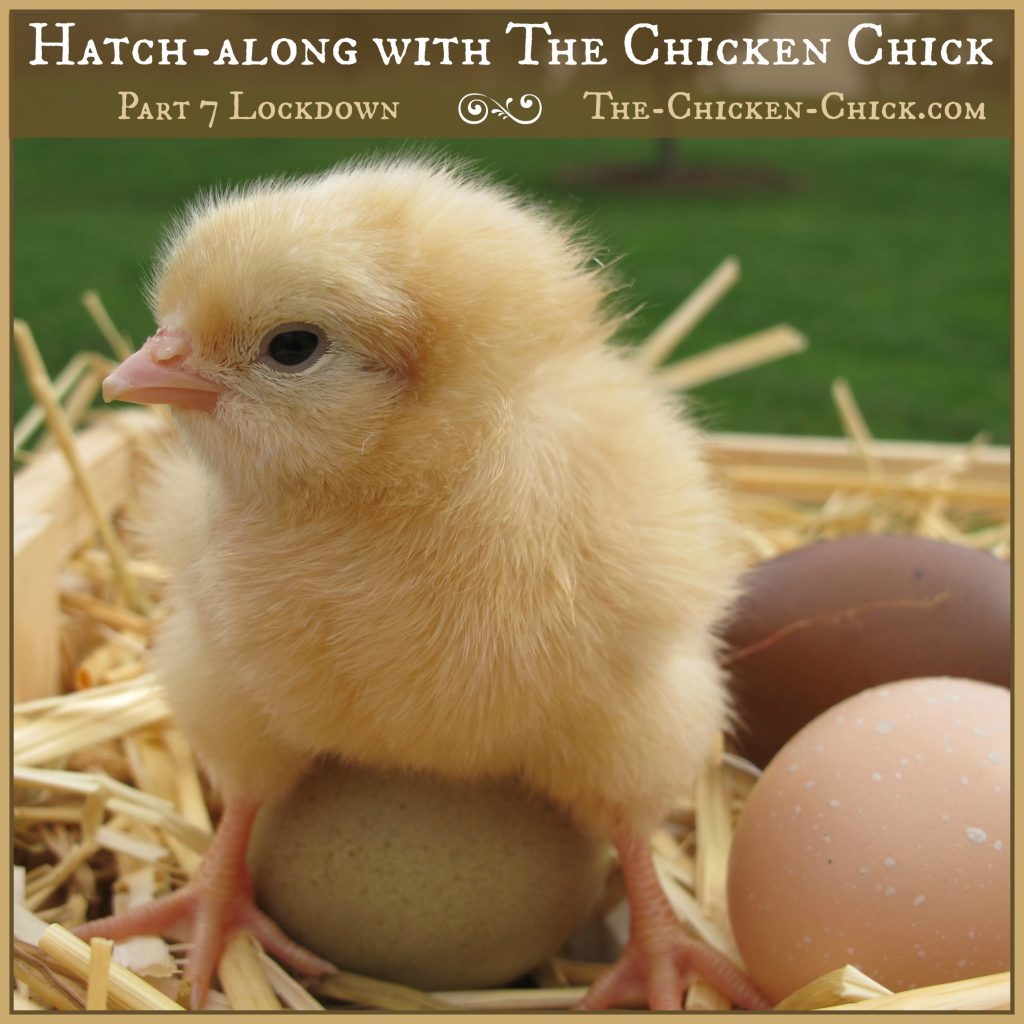
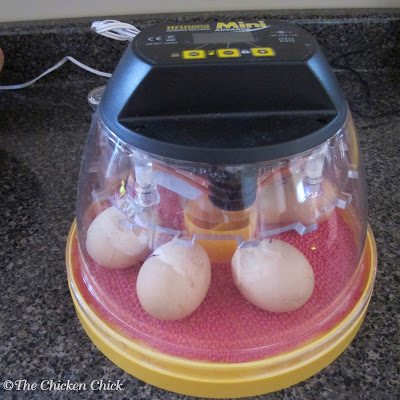

















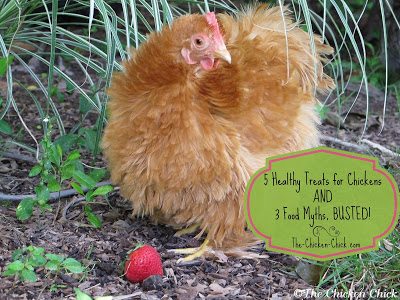

















Hello there! I am currently on day 18 of hatching sex link chicks. When i candled my eggs today, i can see the chicks moving however i noticed their air sack is smaller than what most drawings examples appear to be at this time of incubation. my question is what do i do to improve the air sack size? i have had the incubator at 99.5 the entire time as well as one of the water chambers of my brinsea incubator filled at all times. development appears to be normal other than the size of the air cell. any suggestions… Read more »
I am on day 18 of hatching sex linked chicks. my air cell does not appear to be as large as the ones in your photos above. i have the same brinsea incubator as what you use. the temp has been at a solid 99.5 degrees with one side of the water canister filled at all times. the eggs have only been candled on days 7, 14, and 18. do you recommend i do anything to enlarge the air cell or will it be ok? thank you for your time and help.
Im now on day 20 but my eggs arent making any noises or anything is that bad?
my eggs are on day 18 what do i do then?